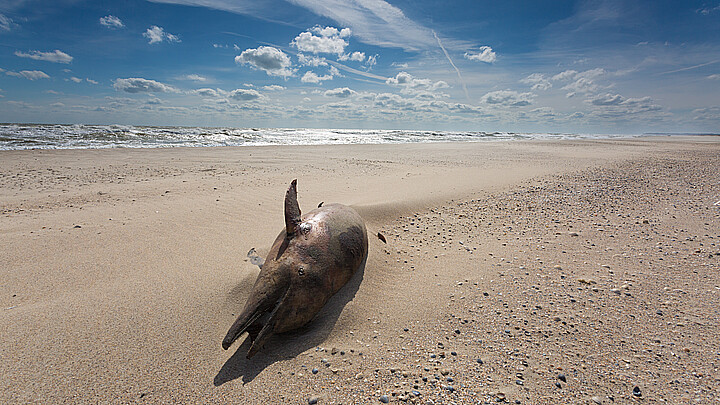Health
Gigantic bacteria visible to naked eye discovered in Caribbean, research continues in California lab
Scientists have discovered a gigantic strain of bacteria in a Caribbean swamp with cells so huge it can be seen by the naked eye, according to a report published in the academic journal Science and The New York Times.
June 26, 2022 12:41pm
Updated: June 26, 2022 2:47pm
Scientists have discovered a gigantic strain of bacteria in a Caribbean swamp with cells so huge it can be seen by the naked eye, according to a report published in the academic journal Science and The New York Times.
The bacterium, called “Candidatus Thiomargarita magnifica,” are “visible to the naked eye,” the researchers said in the Science report.
“These cells grow orders of magnitude over theoretical limits for bacterial cell size, display unprecedented polyploidy of more than half a million copies of a very large genome, and undergo a dimorphic life cycle with asymmetric segregation of chromosomes into daughter cells,” the scientific publication said.
The bacteria was first discovered in the Guadeloupe archipelago of the Caribbean. Researchers claim they are so tremendous that they “challenge traditional concepts of bacterial cells.”
“It would be like meeting another human the size of Mount Everest,” said Jean-Marie Volland, a microbiologist at the Berkley, California based Joint Genome Institute microbiologist.
“Bacteria do not have the compartments found in eukaryote cells. Without a nucleus, each bacterium typically carries a loop of DNA floating freely around its interior. They also do not have mitochondria. Instead, they typically generate fuel with molecules embedded in their membranes. This arrangement works well for tiny cells. But as the volume of a cell increases, there is not enough room on the surface of the cell for enough fuel-generating molecules,” the Times explained.
“The simplicity of bacteria seemed to explain why they were so small: They just didn’t have the complexity essential for getting big,” the Times continued.
But this assertion was made to quickly, according to Shailesh Date, the founder of the Laboratory for Research in Complex Systems in Menlo Park, Calif., and a co-author of Dr. Volland’s.
The result was scientists making generalizations about bacteria from studying just a limited amount of information.
Our bodies are made up of about 30 million cells that usually measure about 120 microns in diameter or a thousandth of one inch. An E.Coli cell measures about two microns or under a ten-thousandth of an inch. Bacterial cells are their own organisms and can often grow and split into new bacteria. In bodies of water, bacteria often remain together in a type of community and form small ‘filaments.’
But now scientists are saying these are just some examples of microorganisms and not whole representative of the entire bacteria community.
“We have just scratched the surface, but we’ve been very dogmatic,” Date told the Times.
Those generalizations however began expanding in the 1990s. Microbiologists discovered that some bacteria independently evolved compartments of their own. Scientists also learned that some species were visible to the naked eye.
In 2009 University of the Antilles biologist Olivier Gros then discovered Thiomargarita magnifica while researching in the mangrove forests of Guadeloupe, a group of French Caribbean islands. The microbe resembled tiny bits of white spaghetti floating on dead tree leaves in the water.
The California scientists believe the Thiomargarita magnifica have many different compartments, some of which ca generate their own fuel with nitrates.
Dr. Volland and his fellow microbiologists are now aiming to growing the bacteria to confirm their hypotheses. According to the Times, “they will also tackle other mysteries, such as how the bacterium manage to be so tough without a molecular skeleton.”
“You can take a single filament out of the water with tweezers and put it in another vessel,” Dr. Volland told the newspaper. “How it holds together and how it acquires its shape — these are questions we haven’t answered.”
Dr. Date said that there may be more giant bacteria waiting to be found, perhaps even bigger than Thiomargarita magnifica.
“How big they can get, we don’t really know,” he said. “But now, this bacterium has showed us the way.”










